Fertilizing is a crucial step in caring for any flower, including petunias. Without balanced nutrition, the root system develops slowly, and the stems lack the strength to grow. To ensure petunias bloom beautifully in white, red, purple, and pink hues, gardeners use both organic and mineral fertilizers based on nitrogen, potassium, phosphorus, and humic acids. These flowers can be grown in pots, hanging baskets, flower beds, or garden borders. Let’s take a closer look at which fertilizers guarantee lush petunia blooms and the key rules for applying them.
Table of contents
Why Fertilize Petunias?
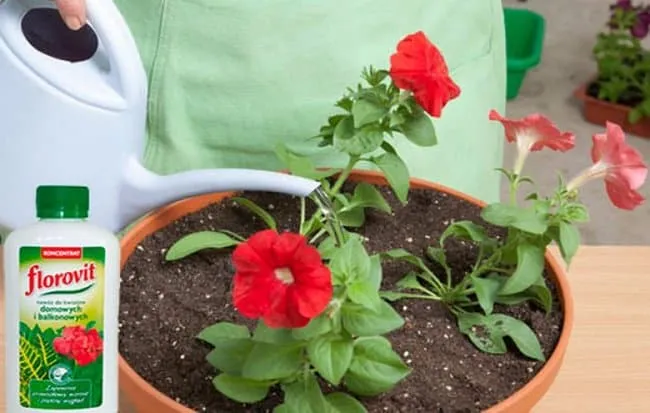
Fertilizing petunias is essential for promoting green growth, root development, and flowering. Thanks to nutrients, the flowers grow beautifully and maintain their decorative appeal. Neglecting fertilization leads to weak growth and increased susceptibility to diseases.
Note: Fertilizers are not a cure-all. They won’t help if other petunia care practices are ignored—watering, soil aeration, and protection from pests and diseases. Only a comprehensive approach ensures healthy and vibrant flowers.
Fertilization Methods
There are two main fertilization methods: root and foliar. Root feeding involves applying nutrients to the soil through watering, while foliar feeding delivers nutrients directly to the plant via spraying.
Experienced gardeners recommend alternating between root and foliar methods to provide balanced nutrition. Root fertilizers support root development and enrich the soil with vitamins and micronutrients, while foliar feeding enhances flower growth and appearance.
Fertilization Schedule
To fertilize petunias correctly, follow a schedule. The first application is before planting—nutrients are added to the seedlings. This step is especially important if the sprouts grow slowly or look unhealthy. Seedlings are watered with a solution based on B vitamins. For 1 liter of clean, warm water, use one ampoule of vitamin B6 or B12, available at pharmacies.
If you have growth stimulants like "Biostim" or "RootBoost," they can be used instead. These help seedlings grow faster and become stronger.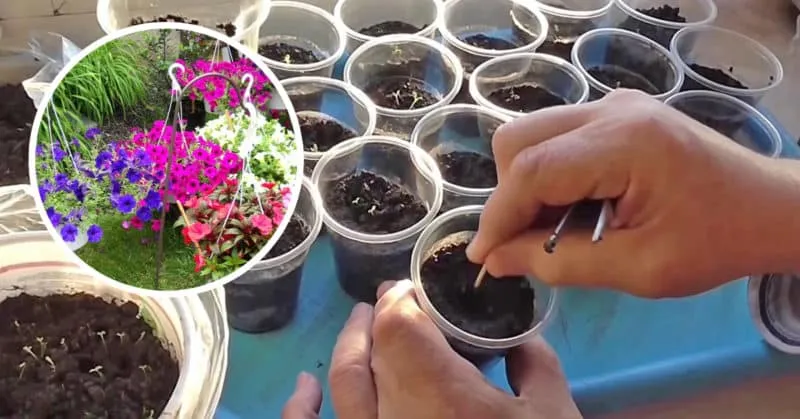
The second fertilization occurs after transplanting to a permanent location. At this stage, nitrogen-rich fertilizers are key—they promote lush flowering and new green shoots. Both root and foliar fertilizers, such as "FloraGrow" or "PlantFeed," are suitable. These contain not only nitrogen but also potassium and phosphorus, which support future blooms. These products are available at garden centers.
The next application is during flowering—once the bush is fully formed, the focus shifts to bud stimulation. Over 2-3 weeks, fertilizer is applied every five days. Use complex formulas like "BloomPlus" or "BudFuel," as well as urea, calcium nitrate, and monopotassium phosphate. Another popular option is "FlowerEnhance," which increases bud size and bloom abundance. Two to three applications per season are sufficient.
Note: After flowering, trim the stems by one-third and water the plant with "GardenElixir." Pruning and fertilizing ensure the plant’s health for the next season.
Types of Fertilizers
Fertilizers can also be classified as liquid, dry, or slow-release. Below is a detailed look at each type.
Liquid Fertilizers
Liquid fertilizers are popular for growing decorative flowers in gardens and homes. They come as concentrated solutions that must be diluted with water before use.
Remember: Excess nutrients can slow growth and encourage bacterial growth.
For petunias, consider:
- "GrowRich" contains essential macronutrients, micronutrients, and humic acids, providing gradual nutrition. For root feeding, mix 10 ml with 1.5 L of water; for foliar, use 5 ml per 1.5 L. "GrowRich" is frost-resistant and remains effective for two weeks after preparation. It boosts disease resistance and enhances flowering.
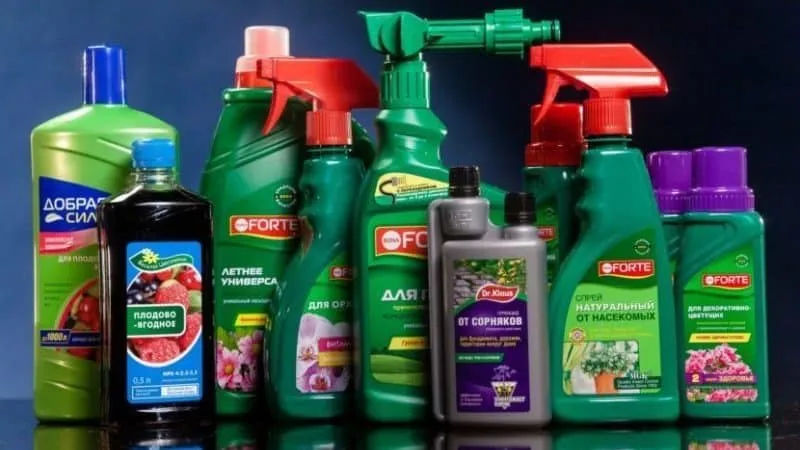
- "BudFuel" is a phosphorus-potassium fertilizer that stimulates bud formation and flowering, suitable for both garden and indoor plants. Available at garden stores. For the solution, mix 3 ml with 1 L of water. Apply every 10-15 days. To avoid burns, keep the concentration below 1%.
Dry Fertilizers
Dry fertilizers are used less often than liquid ones but deliver quick results when applied correctly. For petunias, "PlantGro" is a common choice. It contains an NPK complex along with boron, zinc, copper, iron, sulfur, and manganese. Sold as a white powder, it dissolves in water.
"PlantGro" improves carbohydrate metabolism, maturation, and drought resistance. It doesn’t wash away with water and is eco-friendly. For the solution, mix 25 g with 10 L of water.
Note: Before applying, water the petunias thoroughly. Moisture helps nutrient absorption. Fertilizing dry soil can cause chemical burns.
Slow-Release Fertilizers
Slow-release fertilizers are mixed into the soil before planting. They dissolve upon contact with water, enriching the soil with minerals essential for young plants. Some mistakenly believe that one application is enough, but over-fertilization (e.g., excess potassium) can harm the plant.
Gardeners recommend "SlowFeed." Its nutrients are easily absorbed, ensuring prolonged flowering. Sold as granules, it works for garden, indoor, and balcony plants. The light-gray granules activate upon contact with moisture, gradually releasing nutrients. "SlowFeed" contains nitrogen, potassium, magnesium, phosphorus, zinc, and manganese.
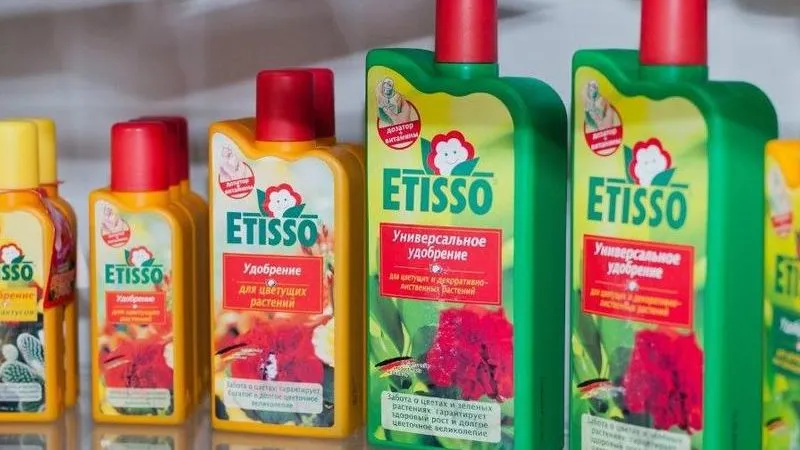
How to Fertilize Petunias for Lush Blooms
What’s the best way to fertilize petunias for abundant blooms? Some prefer homemade remedies, others commercial solutions. Many alternate between the two for optimal results.
Commercial Fertilizers
Commercial fertilizers are easy to use and contain precisely measured nutrients. Most are affordable and available online.
In addition to "PlantFeed" and "FloraGrow," gardeners use:
- "NutriMax" is enriched with minerals and humic acids. Sold as a liquid, it’s mixed at 10 ml per 1 L of water. Apply weekly. Compatible with other fertilizers.
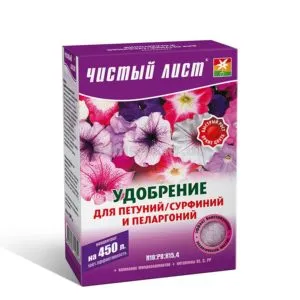
- "MasterBlend" for petunias and surfinias is used during budding and flowering. It enhances bloom vibrancy and is non-toxic. Mix 5 g with 2 L of water. Apply in spring, summer, and fall, every 7-10 days.
- "PureBloom" replenishes soil minerals and benefits petunias at any growth stage. It contains vitamins and phytohormones, boosting growth and drought resistance. Mix 10 g with 10 L of water and spray 2-4 times monthly. Absorption rate is 95-97%.
Homemade Remedies
A popular homemade option uses baker’s yeast. The solution accelerates root development and prolongs flowering. Mix 100 g dry yeast, 50 g sugar, and 10 L water. Let sit for 2 hours in a dark place, then dilute with 50 L water. Use for spraying or watering.
Another option is a citric acid solution. Mix 12 g acid with 3 L water. If available, add 7.5 g iron sulfate. Spray the foliage for 5-10 days to enhance blooms and leaf color. Apply on dry, windless days.
How to Water Petunias in Hanging Baskets for Abundant Blooms
Lack of moisture causes yellowing leaves and wilted buds. If petunias grow in hanging baskets, water them twice daily in June, July, and August—morning and evening. Ensure proper drainage with fine gravel or sand. Petunias also enjoy misting, but avoid wetting the flowers.
For indoor petunias, reduce watering to twice every 3-4 days. Maintain humidity above 80%. Replace water with liquid fertilizer once a week. If unsure about soil dryness, wait 1-2 days before watering.
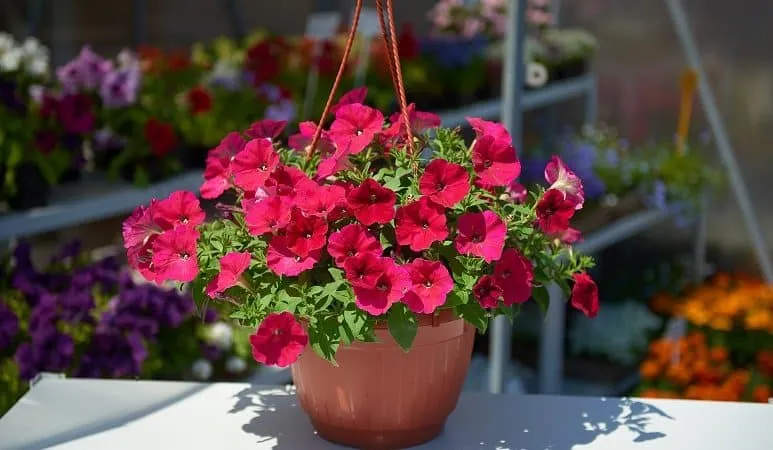
Fertilization Guidelines
How and when to fertilize petunias for prolific blooms? Expert tips:
- Begin fertilizing 10-14 days after transplanting.
- Apply root fertilizers only to moist soil.
- Start regular feeding after the second true leaf appears.
- Use a growth stimulant one week after planting.
- Follow dosage instructions carefully; check expiration dates.
- Fertilize on dry, cloudy, windless days.
- Alternate between root/foliar and commercial/homemade fertilizers.
- Prioritize nitrogen-rich formulas at the start of flowering.
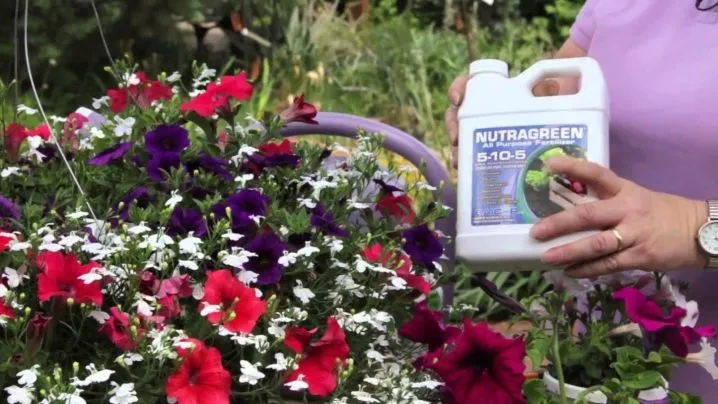
Conclusion
What’s the best fertilizer for lush petunia blooms? Gardeners use dry, liquid, and slow-release options. Liquid fertilizers are the most popular—easy to prepare and suitable for indoor and outdoor plants. Slow-release and dry fertilizers are less common but effective when used correctly.
Before fertilizing, always water the soil thoroughly. Avoid applying nutrients to dry soil.







